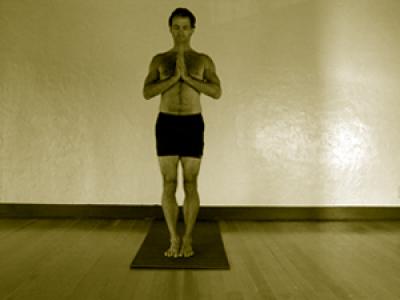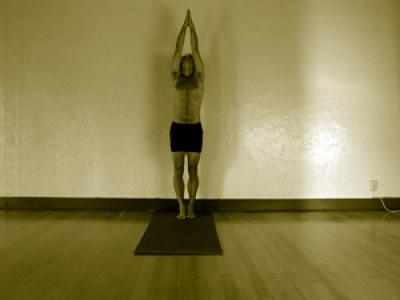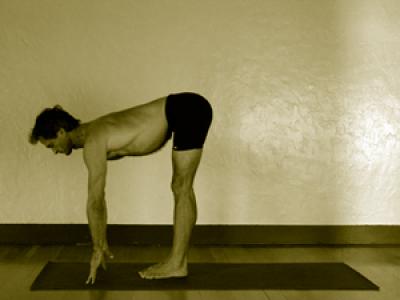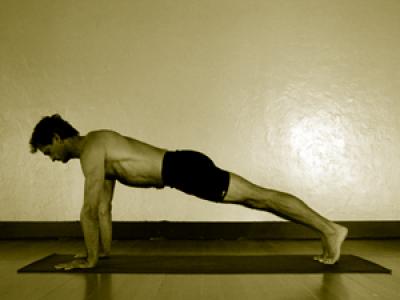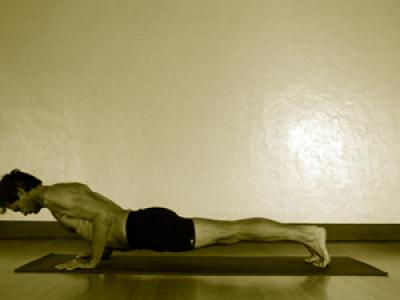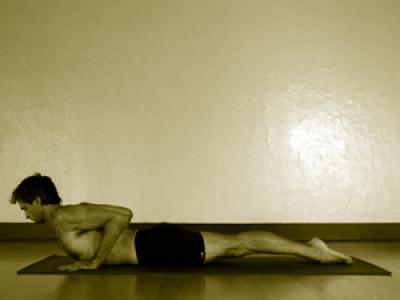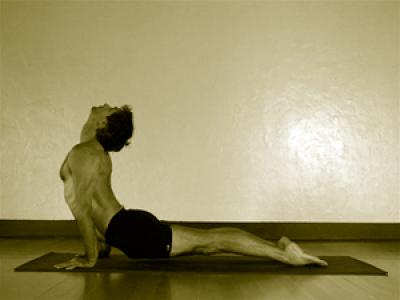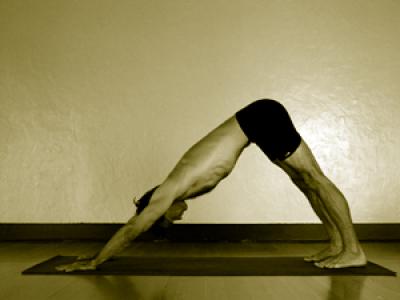Surya Namaskara C (Classical Sun Salutation)
- Begin standing in Tadasana with Samathihi and Anjali Mudra: balanced, present, awake, calm, grounded, expansive.
- Remember that your breath is of primary importance.
- Consider starting with 1-3 vinyasas of Tadasana - Urdhva Hastasana – Tadasana.
- Can also begin with 1-3 vinyasas of Ardha Surya Namaskara, “Half Sun Salutations”: Samasthihi – Tadasana – Urdhva Hastasana – Uttanasana - Ardha Uttanasana – Uttanasana – Urdhva Hastasana – Tadasana. • Consider holding Anjaneyasana for 3-5 breaths in the first salutation, slightly rising and lowering from the “edge” the lunge sensation to gradually awaken the groins and iliopsoas.
- In the transition from Tadasana to Urdhva Hastasana, emphasize keeping the pelvis level (it will tend to tilt forward) and floating ribs softening in. These qualities will help you learn and develop greater shoulder flexion while cultivating stability and safety in the spine.
- Always consider the option of gazing forward rather than up in Urdhva Hastasana as a means of protecting the neck.
- In folding forward from Urdhva Hastasana to Uttanasana, consider the option of having the knees bent to reduce tension in the hamstrings and low back.
- As you open in the hamstrings and low back, focus more on activating your feet, keeping your legs firm, knee caps lifted, spine long, shoulder blades drawing down the back and heart center open as you fold forward.
- Teaching “swan diving” forward encourages expansiveness across the heart center and deeper breath. Folding forward and down with the palms drawing down thru center – thru Anjali Mudra – can foster a deeper sense of heart-centered awareness.
- When inhaling into Ardha Uttanasana, emphasize lengthening the spine and further expanding across the heart center. Consider the options of having the knees bent, coming up onto the fingertips and/or placing the hands high up on the shins.
- In stepping back to Anjaneyasana, emphasize maintaining the length of the spine and openness of the heart center.
- In stepping from Anjaneyasana to Plank Pose, you may benefit from immediately placing your knees on the floor to take it easier.
- In lowering from Plank Pose on the exhale, sequentially place your knees, chest and chin on the floor.
- Next, release your hips to the floor, press your feet firmly down until your knee caps lift off the floor, firm your thighs while spiraling your inner things up, and draw your tailbone toward your heels.
- While maintaining the engagement of your legs, press into your hands – placed beneath your shoulders – to begin lifting your chest up while shrugging your shoulder blades down your back. The latter action will create space and ease around the neck while emphasizing the openness of the heart center and lungs.
- Finally, create a sense of trying the pull your body forward through your hands, which will gently deepen the backbend, drawing the curve up higher in the cervical spine while keeping the hips rooted, legs strong, tailbone drawing toward the heels and breath active.
-
In transitioning from Salabhasana to Adho Mukha Svasanasa, consider the option of pressing up onto all fours as a transitional step.

